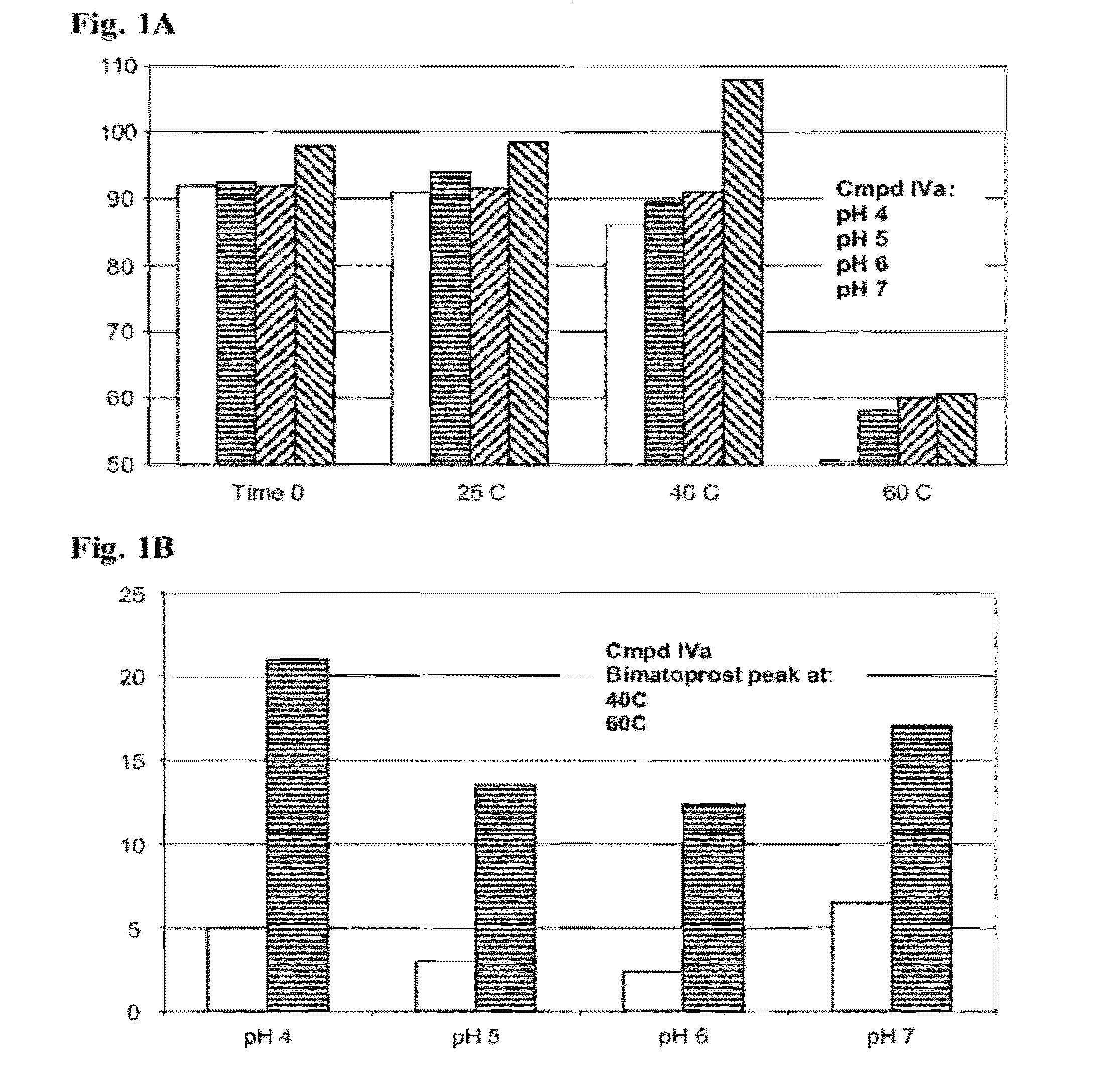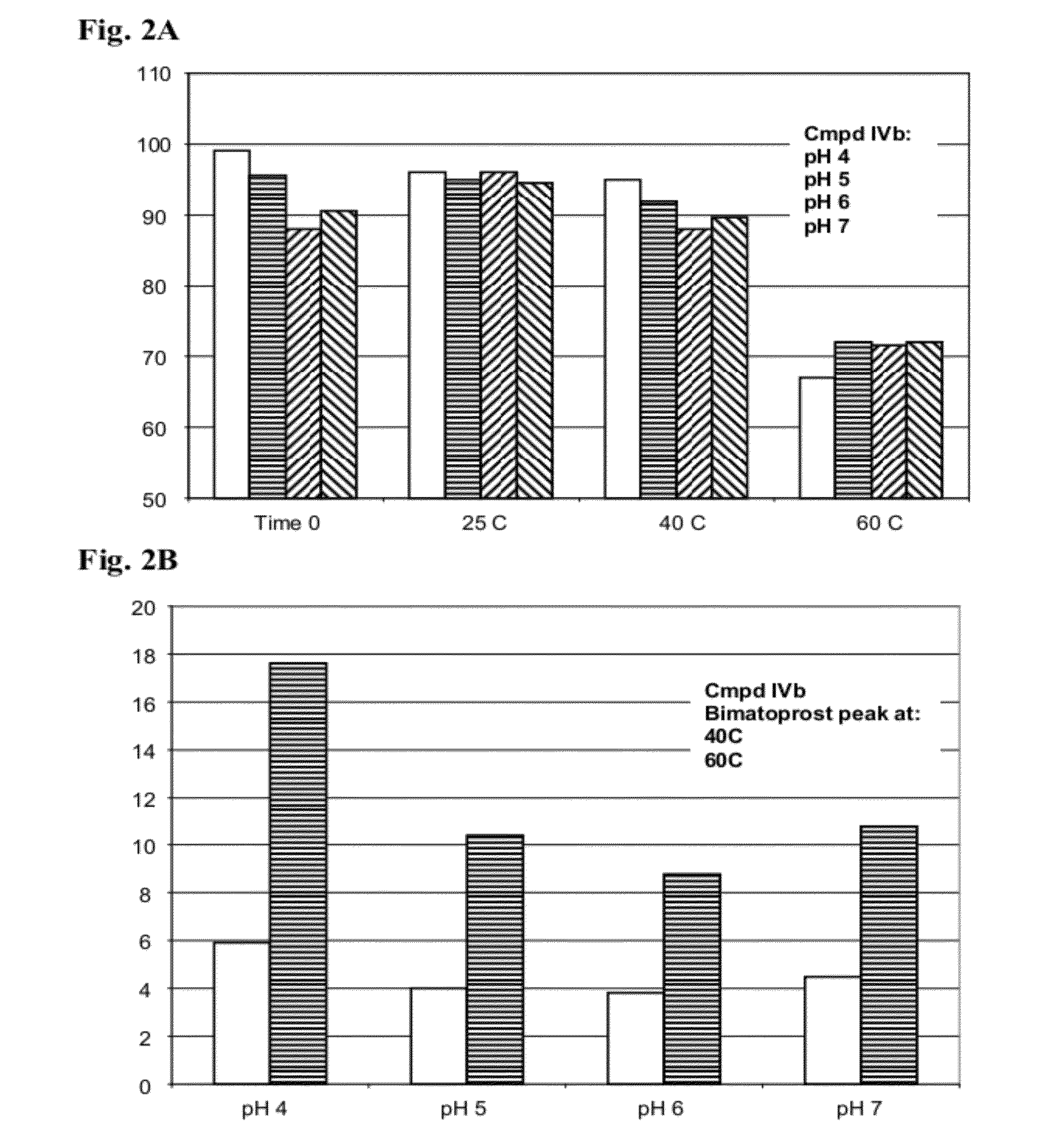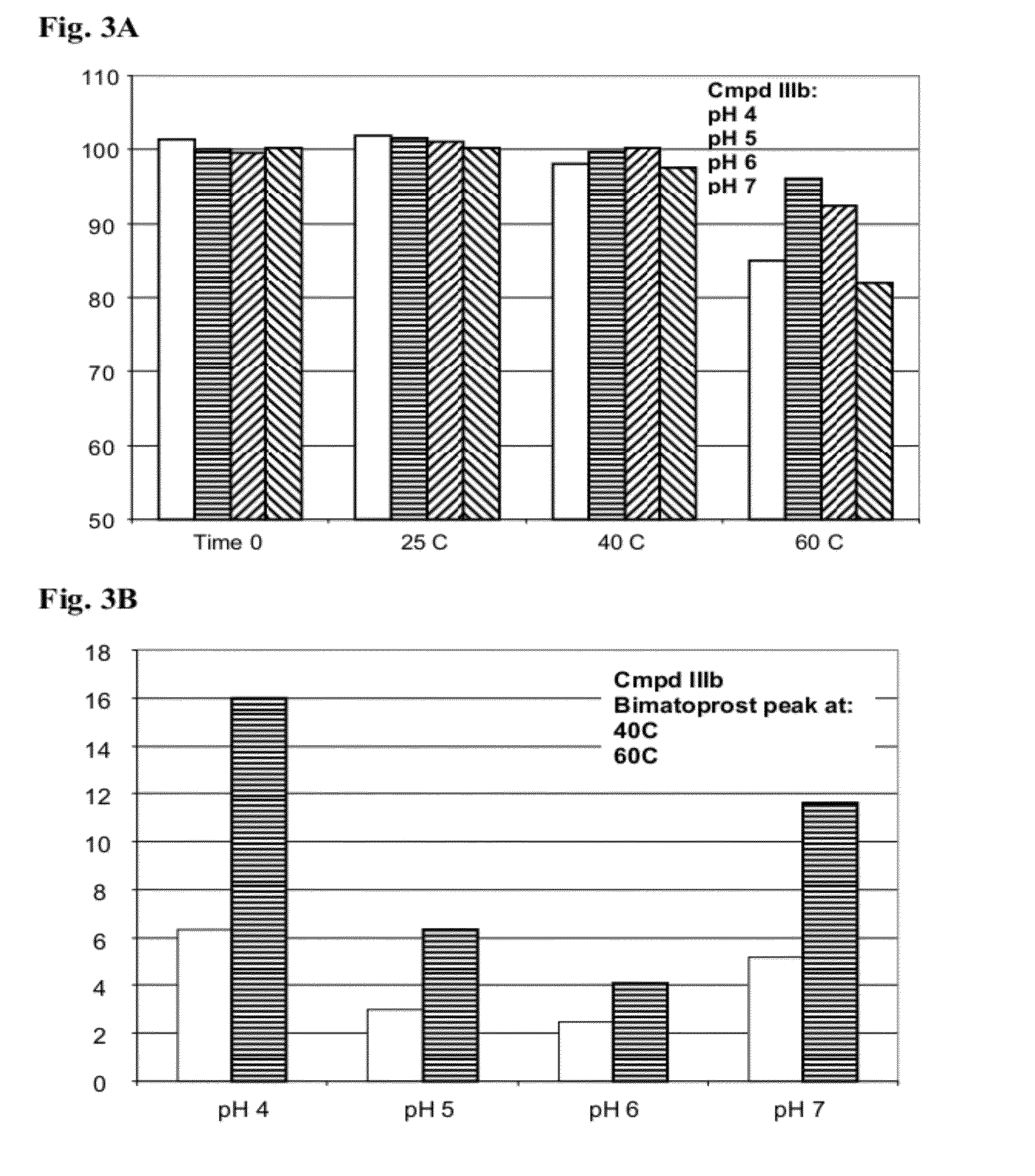Ester Derivatives of Bimatoprost Compositions and Methods
a technology of bimatoprost and composition, applied in the field of bimatoprost-derived compositions, can solve the problems of hypertrichosis (i.e., increased hair growth) in the treated region, and achieve the effect of reducing adipose tissue and lowering intraocular pressur
- Summary
- Abstract
- Description
- Claims
- Application Information
AI Technical Summary
Problems solved by technology
Method used
Image
Examples
example 1
Synthesis of 11 propionyl bimatoprost
Example 1a
Synthesis of 15-tert-butyldimethylsilyloxy-bimatoprost
[0256]
[0257]A solution of bimatoprost (270 mg; 0.65 mmoles) and n-butylboronic acid (83 mg; 0.81 mmoles) in anhydrous dichloromethane (2 ml) was stirred to reflux for 40 minutes, cooled, evaporated in vacuo and azeotroped with anhydrous benzene (3×5 ml). To the residue was added anhydrous dichloromethane (2.5 ml) then, over an ice bath, 2,6-lutidine (0.20 ml; 1.7 mmoles) and tert-butyldimethylsilyl trifluoromethanesulfonate (340 mg; 1.3 mmoles) were added. The resulting mixture was stirred overnight at ambient temperature then partitioned between ethyl acetate and 10% aqueous citric acid. The organic layer was separated, washed with brine, dried over sodium sulfate and evaporated in vacuo. The residue was stirred in methanol (6 ml) for 2 hours and evaporated in vacuo. 15-tert-butyldimethylsilyloxy-bimatoprost (220 mg; 64%) was obtained as a clear oil following silica gel chromatograp...
example 1b
Synthesis of Synthesis of 15-tert-butyldimethylsilyloxy-11-propionyl-bimatoprost
[0258]
[0259]To a solution of 15-tert-butyldimethylsilyloxy-bimatoprost (100 mg; 0.19 mmoles) in anhydrous pyridine (1 ml) was added propionyl chloride (20 μL; 0.23 mmoles) at 0° C. The mixture was left at 4° C. for 16 hours, then partitioned between ethyl acetate and 10% aqueous citric acid. The organic layer was separated, washed with brine, dried over sodium sulfate and evaporated in vacuo. 15-tert-butyldimethylsilyloxy-11-propionyl-bimatoprost (55 mg; 50%) was obtained as a clear oil following silica gel chromatography of the residue eluting with 40-60% ethyl acetate in hexanes.
example 1c
Synthesis of 11-propionyl bimatoprost (IIIb)
[0260]
[0261]To a solution of 15-tert-butyldimethylsilyloxy-11-propionyl-bimatoprost (60 mg; 1.02 mmoles) in a mixture of acetonitrile (1.5 ml) and tetrahydrofuran (1 ml) at 0° C. was added aqueous hydrofluoric acid (48-51%; 0.1 ml). The solution was warmed to room temperature. After 30 minutes, water (5 ml) was added and the mixture extracted with dichloromethane (2×10 ml). The combined organic layers were dried over sodium sulfate and evaporated in vacuo. 11-propionyl bimatoprost (43 mg; 89%) was obtained as a clear oil following silica gel chromatography of the residue eluting with 50-100% ethyl acetate in hexanes.
PUM
| Property | Measurement | Unit |
|---|---|---|
| pH | aaaaa | aaaaa |
| pH | aaaaa | aaaaa |
| pH | aaaaa | aaaaa |
Abstract
Description
Claims
Application Information
 Login to View More
Login to View More - R&D
- Intellectual Property
- Life Sciences
- Materials
- Tech Scout
- Unparalleled Data Quality
- Higher Quality Content
- 60% Fewer Hallucinations
Browse by: Latest US Patents, China's latest patents, Technical Efficacy Thesaurus, Application Domain, Technology Topic, Popular Technical Reports.
© 2025 PatSnap. All rights reserved.Legal|Privacy policy|Modern Slavery Act Transparency Statement|Sitemap|About US| Contact US: help@patsnap.com



